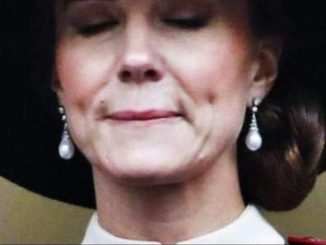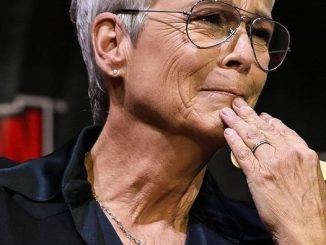Hollywood actors Georg Stanford Brown and Tyne Daly only dated for five months before deciding they wanted to be together forever.
Their love affair began in the 1960s when interracial marriage was considered taboo, illegal, and punishable by law.

They married on June 1, 1966, just one year before interracial marriage became legal across the U.S. As late as 1960 such marriages were illegal in 31 states in the U.S.
Georg Stanford Brown had moved from Havana to Harlem when he was 7 years old and then moved to LA 10 years later where he finished his education, majoring in theater arts.

Although, initially choosing the path of theater arts to ‘do something easy’ he ended up enjoying it and returned to New York to attend the American Musical and Dramatic Academy, working as a school janitor to pay his tuition, earning $80 a week.
It was there that he met his future wife Tyne Daly where they both studied under Philip Burton, Richard Burton’s mentor.
Brown is perhaps best known for his role as Officer Terry Webster, one of the stars of the ABC television series “The Rookies” that aired from 1972 to 1976.

He was also well known for his character Tom Harvey in the mini-series “Roots.”
During his long career as an actor and director, Brown played a variety of film roles, including Henri Philipot in The Comedians and Dr. Willard in Bullitt. In 1984 he starred in The Jesse Owens Story as Lew Gilbert.
When Brown married American singer and actress Tyne Daly she was a household name for her iconic role-playing Mary Beth Lacey, the gun-toting working-mother cop in the hit show “Cagney and Lacey.”

When the couple got married they faced racial prejudice but chose to ignore it – until they appeared on an episode of “The Rookies” together and shared their first on-screen interracial kiss.
Network censors wanted the scene deleted, but the couple stood their grounds, taped, and aired the segment without any issues from those closest to them.
In an interview with the Washington Post in 1985, Daly said she never saw being married to Brown as interracial. She does not, she says, “like pigeonholes.”
She is married to “another member of the human race. I gave up categories a long time ago,” she added.

The couple has three daughters Alisabeth Brown, born December 12, 1967; Kathryne Dora Brown, born February 10, 1971; and Alyxandra Beatris Brown, born October 1, 1985.
Daly said when their daughter Alyxandra was born, “on her birth certificate, under ‘race,’ we put ‘human’; under ‘sex’ we put ‘yes’, and under ethnic origin, we put ‘citizen of the world.’”
Describing her marriage to Brown, Daly said: “I have a good and interesting marriage that has gone on for quite some time and he’s an interesting fellow and we have some fascinating young children . . .”

Brown went into directing, and in 1986, he won a Primetime Emmy Award for Best Director in a Drama Series for the final episode of “Cagney & Lacey.”
Daly went on to star in many Broadway shows playing the role of Madame Arkadina in “The Seagull” in 1992, Cynthia Nixon in the 2006 comedy “Rabbit Hole,” and Maria Callas in “Master Class” in 2011, among others.
In 1990, after 24 years of marriage, Brown, and Daly filed for divorce. Even though their marriage had stood the test of time, they had to go their separate ways due to irreconcilable differences.

Despite divorcing after more than two decades this couple’s love and their fight to ignore the prejudice they faced is an inspiration.
Legendary Actress Loni Anderson: Forever Beautiful at 78
A Star That Lives On Beyond Time
Loni rose to stardom in the late 1970s when she played the sexy and intelligent Jennifer. She won three Grammys for the program, which followed the highs and lows of a made-up Ohio radio station.
According to Loni, “I think women liked that I embodied both sexiness and intelligence.” “There weren’t many women in comedy in 1978 who could pull off the two seamlessly.”
Early Mistakes and Unwavering Willpower
Loni found it difficult to get beyond the obstacles in her way when she first became famous. The first girl in the school had to endure stares and remarks, so it wasn’t always easy to wear a bra. However, Loni demonstrated that nothing could stand in her way.
She never turned back after making her acting debut in 1966. She continued to solidify her reputation as a legendary actress by making cameos in a number of TV series and motion pictures. Her appearance in a bikini poster, which was crucial to her landing the Jennifer role on WKRP, is one of her most memorable moments.

Loni grinned and said, “I posed for that poster because my grandchildren would see it one day.” And I’ll be happy to inform them that’s just how I came across. You received exactly what you saw.
Overcoming Personal Challenges
Loni’s personal life wasn’t always glamorous, even though she was well-known on television. She experienced highs and lows in her four marriages, the most well-known being to actor Burt Reynolds. After six years of marriage, their dramatic and widely publicized divorce was tainted by derogatory comments and accusations. But in the end, Loni showed incredible strength by admitting the difficulties she had. She was honest about the allegations of physical abuse and unpaid child support.

When Burt passed away in 2018, Loni paid her respects, which says volumes about her personality. She knew how he affected her life and their son Quinton’s. This reveals her ability to be forgiving and kind.
Increasing in Years But Not in Grace
Loni Anderson, who is 78 years old, exudes beauty. She credits maintaining a healthy lifestyle with frequent exercise and a balanced diet for her youthful appearance. She strives to redefine the boundaries of age and confronts the notion of what a grandma should look like with unyielding tenacity.
Loni said, “I never thought I wanted to be the traditional, sensible-shoe-wearing, rocking-chair-wearing grandma.” “We need to shift people’s perceptions of what grandmothers can be because they don’t fit that stereotype!”
A Life Overflowing with Inspiration and Love
Not only does Loni have a positive attitude on life, but she also surrounds herself with the proper people. In 2008, she tied the knot with guitarist Bob Flick, her true love. These days, they are content grandparents raising a lovely family. It’s always a pleasure to be with Loni Anderson, who never fails to uplift us with her optimistic outlook on life despite hardships like learning that her daughter has multiple sclerosis. She tells us that real beauty comes from the inside out and that age is just a number.




Leave a Reply